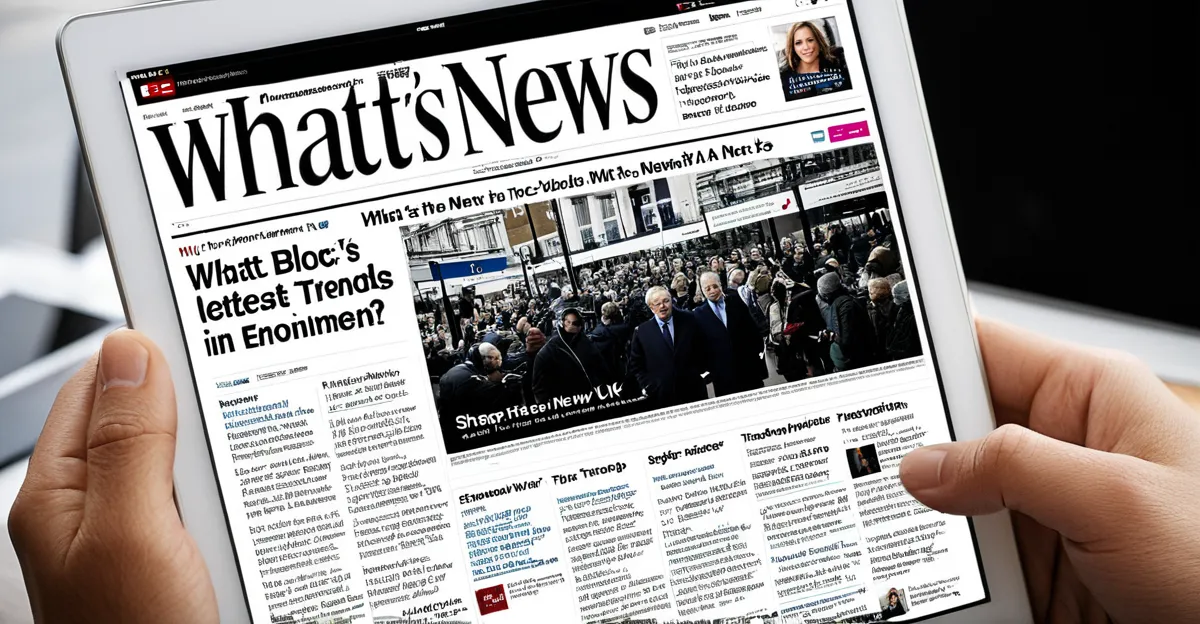Key Influences Shaping Current UK News Trends
Understanding UK news trends requires examining the major drivers that frame today’s reporting. Recent political events, such as elections and policy shifts, profoundly affect news narratives by directing audience attention and shaping editorial priorities. News outlets often react swiftly to these developments, highlighting the immediate impact on public discourse.
Economic factors also play a crucial role. For example, inflation and cost of living concerns dominate coverage, influencing how stories are framed and which voices are amplified. These financial realities shape both the content and tone of news, reflecting their importance to the audience’s daily lives.
Also read : What Are the Long-Term Implications of Recent UK News Events?
Sociocultural changes increasingly inform news narratives. Shifts in societal attitudes toward issues like equality, climate, and cultural diversity compel media organizations to adjust their storytelling approaches. This evolving landscape ensures that coverage remains relevant and resonates with contemporary values.
Together, these current influences act as the backbone of UK news trends. Political shifts generate timely topics; economic challenges provide urgency, and sociocultural transformations offer depth. Recognizing these major drivers helps explain why particular stories gain prominence and how news reporting adapts to a changing environment.
Additional reading : How Does the UK Media Influence Public Perception in International Relations?
The Impact of Technology and Digital Media
Technology in journalism has transformed UK news trends extensively, becoming a central driver among current influences. The rise of digital media, particularly social media platforms, enables real-time updates that shape how news stories develop and spread. This immediacy changes news consumption patterns, with audiences expecting faster and more interactive content.
Shifts in news consumption habits reflect these technology-driven changes. Increasingly, readers access news through mobile devices and social apps rather than traditional outlets. This alters editorial strategies, as media organizations tailor content for digital platforms to maintain engagement. The use of multimedia elements, such as videos and live streams, caters to evolving audience preferences.
Digital innovation also challenges traditional news outlets, compelling them to adapt or risk losing relevance. Many have integrated data analytics to optimize content delivery. The prominence of technology in journalism as a major driver underscores its role in shaping both how news is reported and how audiences engage with it. Together, digital media and technology reshape UK news trends by accelerating information flow and redefining consumption habits.
Evolving Editorial Priorities and Audience Demands
In today’s media landscape, editorial strategy increasingly hinges on data-driven decisions. News organizations analyze audience metrics and feedback meticulously to shape content priorities that resonate with readers. This approach ensures that news coverage remains relevant and engaging, directly addressing public interests and concerns.
Audience engagement now demands more than traditional reporting. There is a growing emphasis on diverse representation and inclusion within editorial content. This shift reflects broader societal values and acknowledges the importance of showcasing varied voices and experiences in UK news trends. Media outlets aim to connect authentically with different communities by integrating these perspectives into their coverage.
Responsive content creation is another crucial element. Feedback loops established through digital platforms enable quick adaptations to editorial direction, enhancing audience interaction. Newsrooms utilize analytics not only to monitor performance but to tailor stories in real-time, optimizing how narratives are presented and prioritized.
Together, these evolving editorial priorities reflect a dynamic interaction between media producers and consumers. By focusing on audience needs and embracing inclusion, editors can ensure their content remains impactful amid the complex landscape of current influences shaping UK news trends.
Case Studies: Recent Developments in UK News
Exploring UK news case studies highlights how recent examples reflect broader current influences. Political coverage around elections and referendums consistently acts as a major driver, shaping the news agenda with intense scrutiny and spotlighting key policy debates. For instance, during the last general election, media outlets prioritized analysis of party platforms and voter sentiment, reflecting the audience’s demand for clarity on political choices.
Economic reporting is another critical area, especially amid the ongoing cost of living crisis. News coverage analysis shows a focus on how inflation, wage changes, and market fluctuations impact everyday life. This reflects the role of economic factors as a significant influence on news framing, providing context that resonates deeply with the public’s financial concerns.
Sociocultural shifts, such as movements for equality and climate awareness, also feature prominently. Coverage emphasizes societal changes, often integrating diverse viewpoints to mirror evolving public attitudes. These case studies illustrate how UK news trends adapt dynamically to emphasize not only immediate events but also influential themes shaping long-term narratives. By studying such examples, one gains a clearer understanding of the interaction between news coverage and the major drivers shaping the UK’s media landscape.
Expert Insights and Future Predictions
Media analysts provide valuable expert opinions that illuminate how UK news trends are evolving. They observe that current influences like technology, political shifts, and sociocultural changes will deepen their impact in the coming years. This expert consensus suggests that newsrooms must anticipate and adapt rapidly to maintain relevance and trust.
What are the predicted implications for UK news over the next year? Analysts expect a stronger integration of digital media and data analytics, refining content personalization while balancing ethical considerations. They foresee editorial strategies becoming more audience-centric, leveraging feedback to align with public interest and foster engagement.
Potential challenges include managing misinformation amplified by rapid online dissemination and maintaining journalistic integrity amid commercial pressures. Conversely, opportunities lie in embracing innovative storytelling formats and expanding diverse representation, responding to growing demand for inclusion.
These expert perspectives guide understanding of future trajectories within UK journalism. By heeding such analysis, media organizations can proactively address challenges and capitalize on emerging trends. This forward-looking approach is essential for sustaining the evolving landscape shaped by major drivers of UK news trends.





